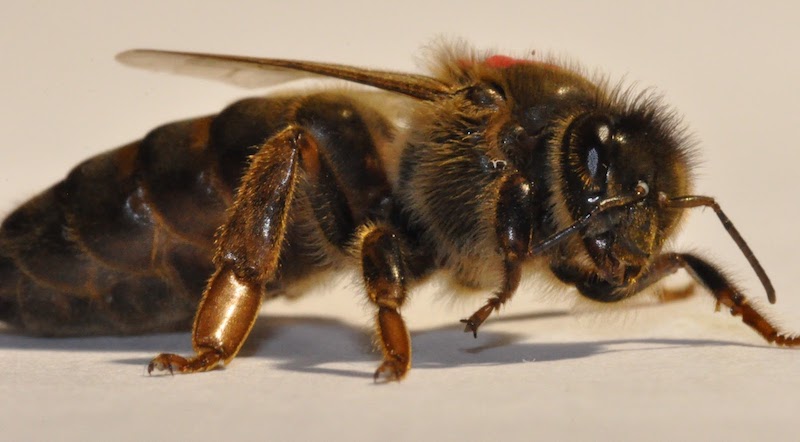The queen’s morphology and body shape is adapted to reproduction’s need, meaning that she is larger, thereby making it easier for beekeepers to find her among workers and males. Her two priorities are to lay eggs and regulate the colony’s activities via pheromones.
Physiological features
Queens’ appearance evolves through time: a young and virgin queen tends to look just like any worker bee in the hive. Once she starts to lay eggs, she barely flies and her abdomen grows massively making it simpler to notice her. At the end of her life, she tends to lose her hair and the ends of her wings are worn out.
In short, the queen’ morphology is characterised by:
– a larger abdomen
– a more developed thorax
– a shorter tongue
The queen’s role
As mentioned, her two priorities within the hives are to lay eggs and regulate the colony’s activity with pheromones.
The queen’s reproductive system includes two large ovaries (which accounts for a large part of her enlarged abdomen) that produces eggs. The particularity of queen bee is that they have a seminal receptacle, that store male’s seminal fluids throughout her life.
Also, queens can control worker bees’ behaviour through pheromones, produce by their mandibular glands. The extent of the queen’s effect on bees and the hive’s activities remains unclear, but is believe to be large and powerful.
When should beekeepers change queens?
The first scenario is when a queen gets too old to properly regulate and control the colony, a beekeeper is able to recognise what is happening when he/she notices a decrease in laying or a laying of un-feconded eggs, suggesting an empty seminal receptacle. The second scenario is when a queen bee dies, then the worker bees will bring up new cells and raise a new queen naturally. Lastly, beekeepers will have to replace their queens in instances of swarming.

